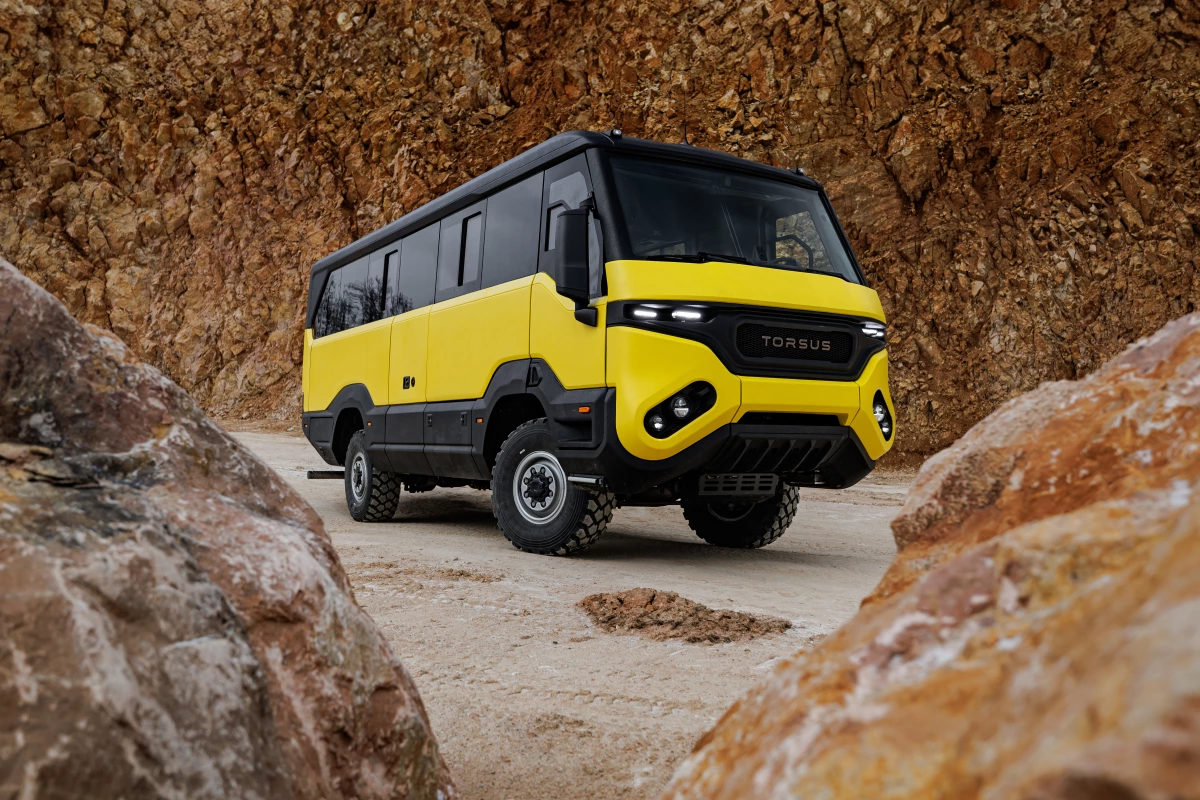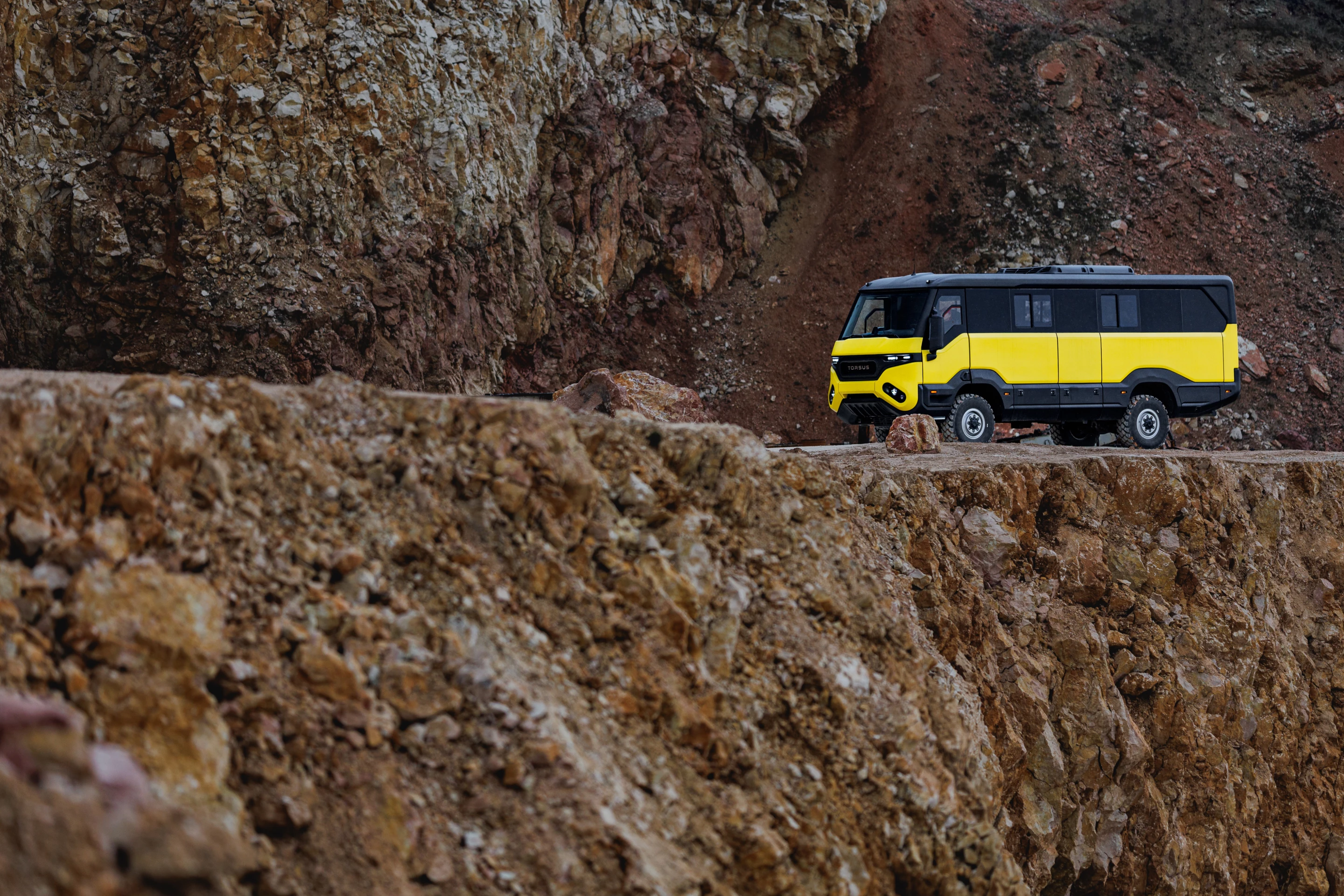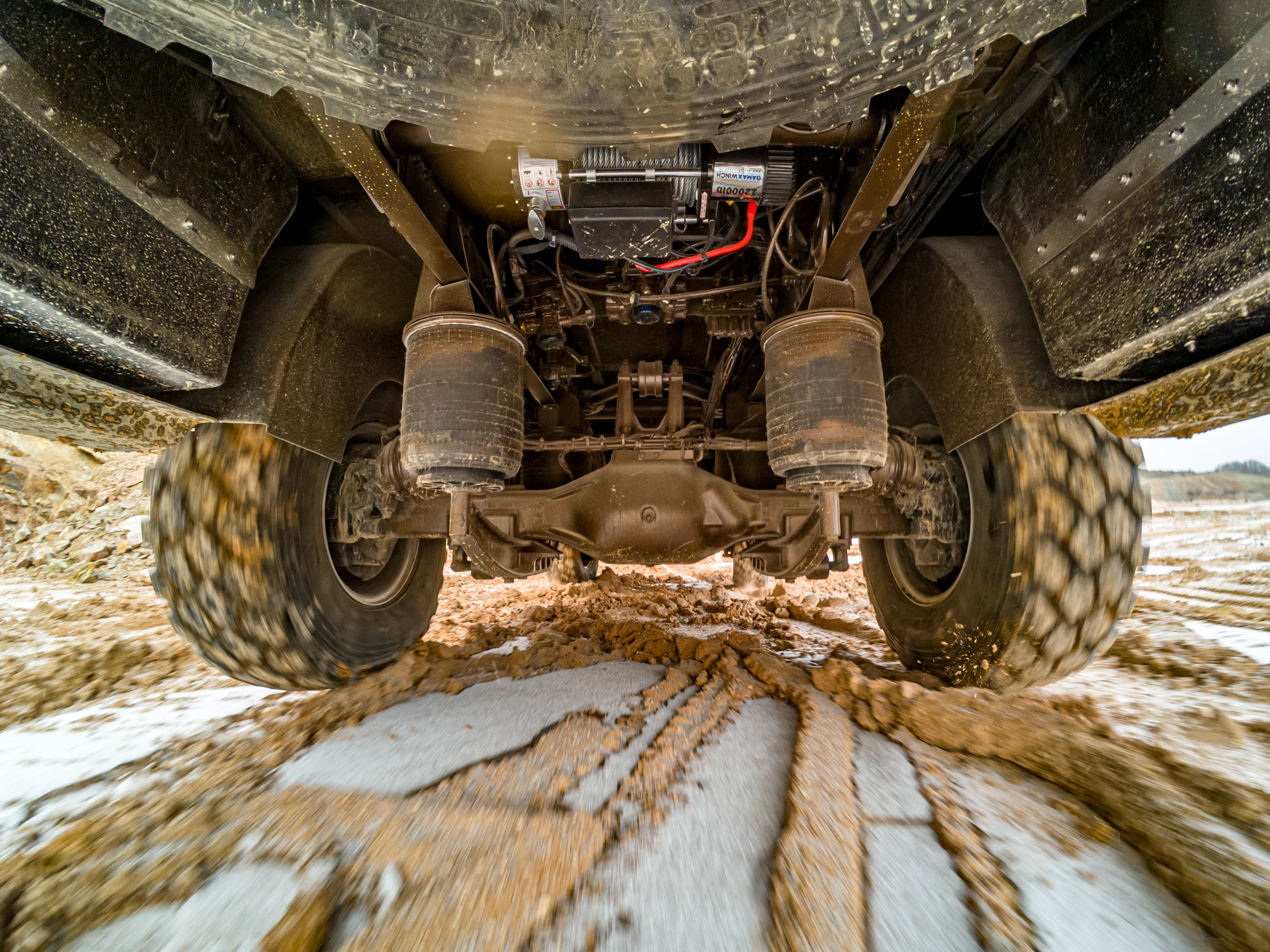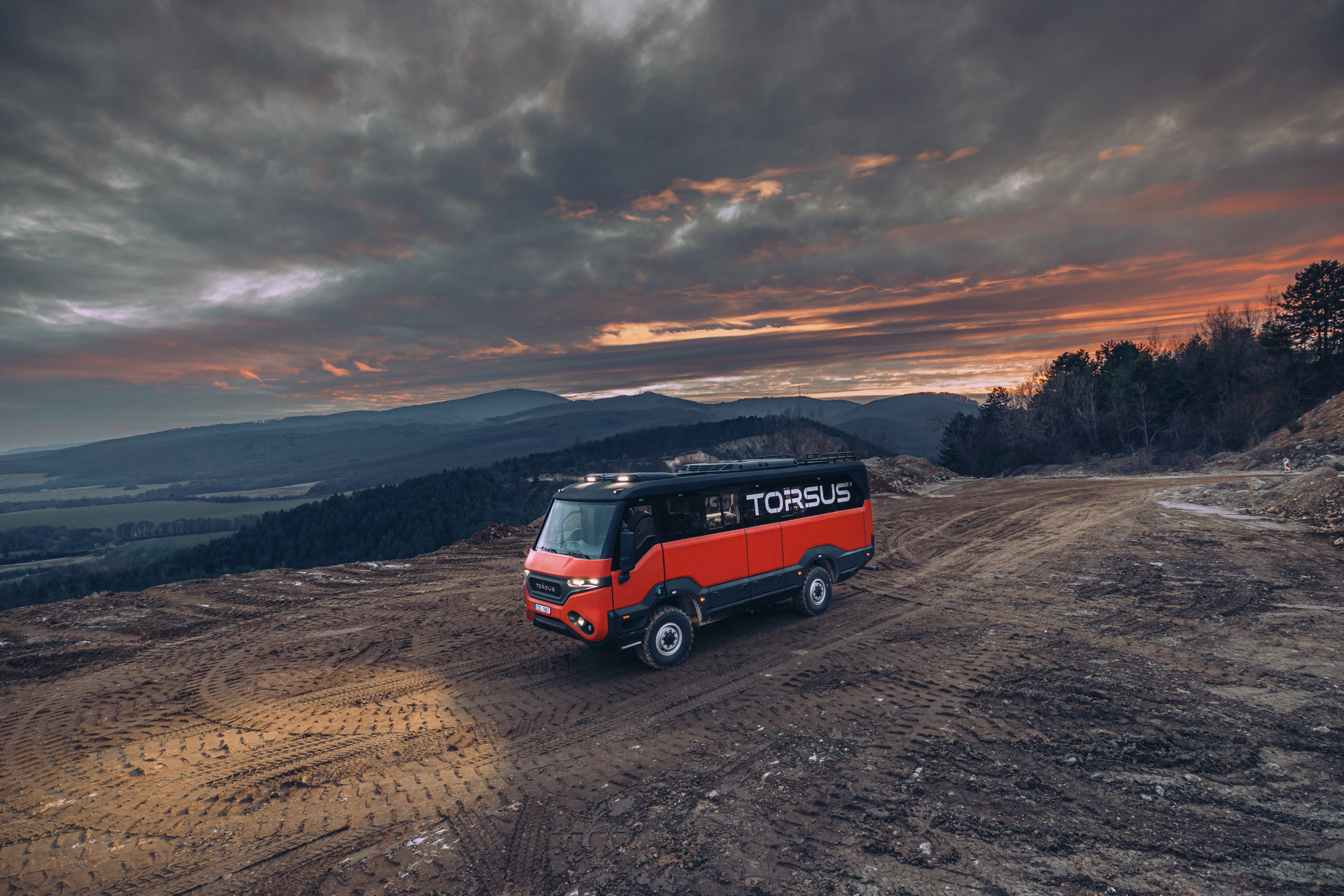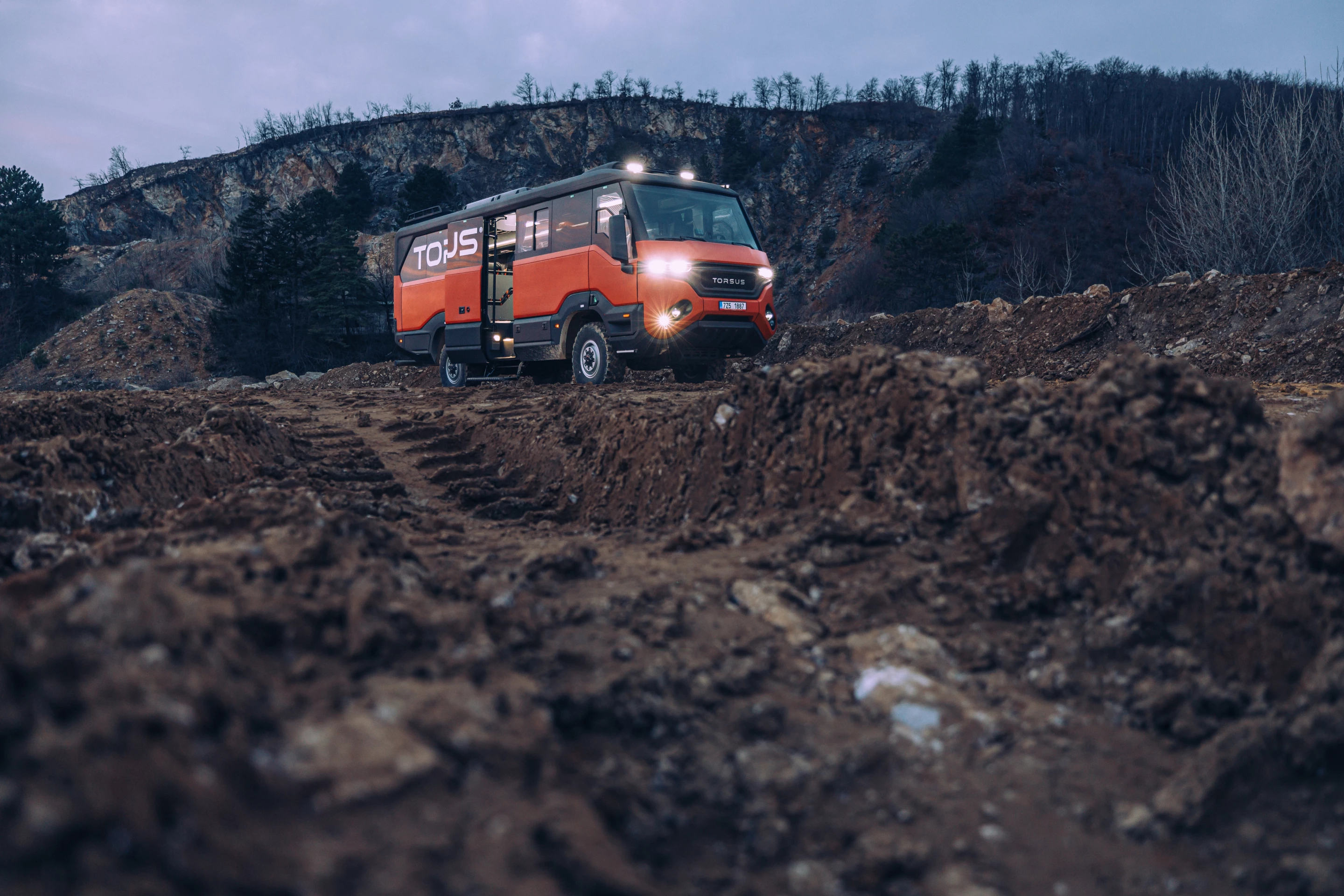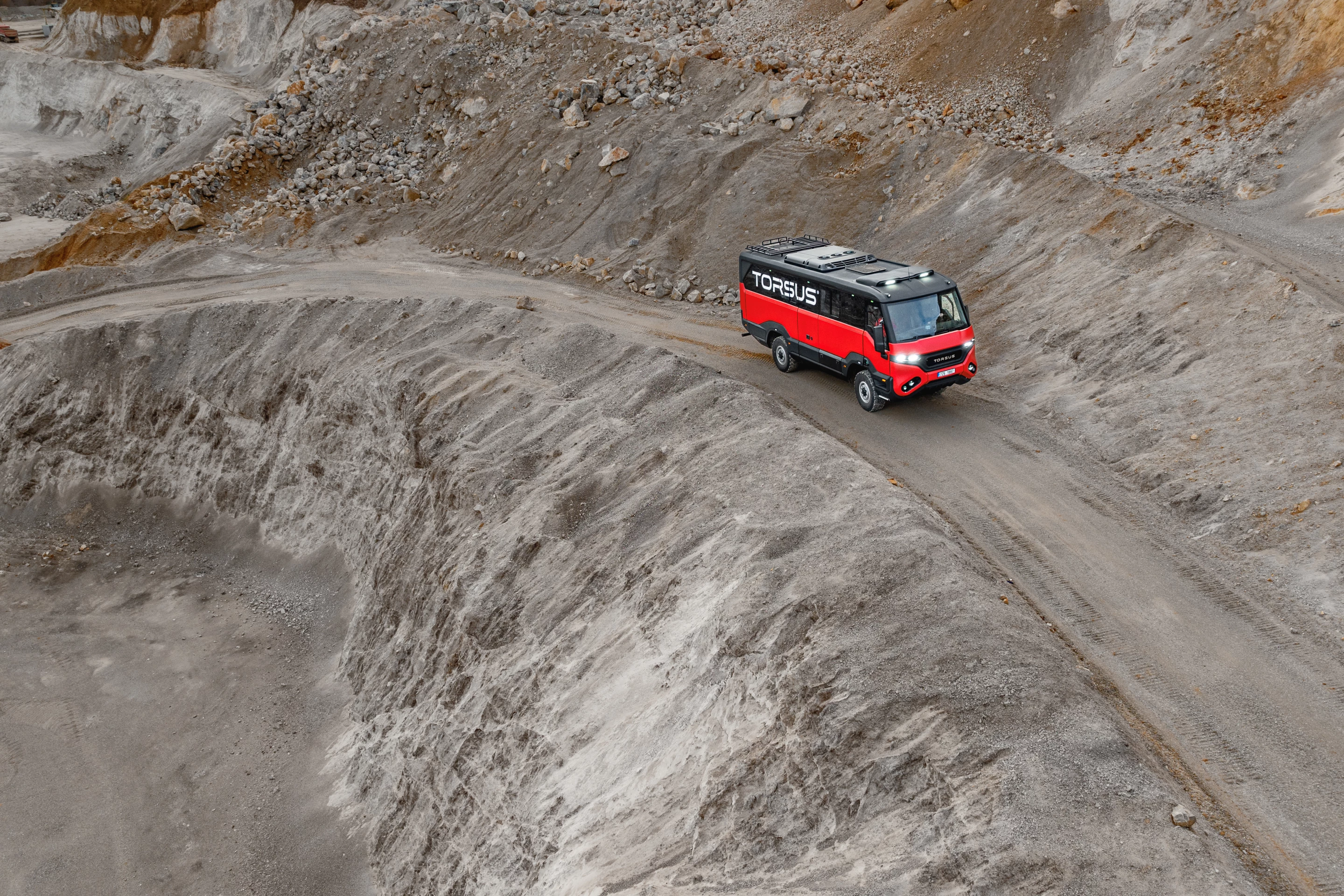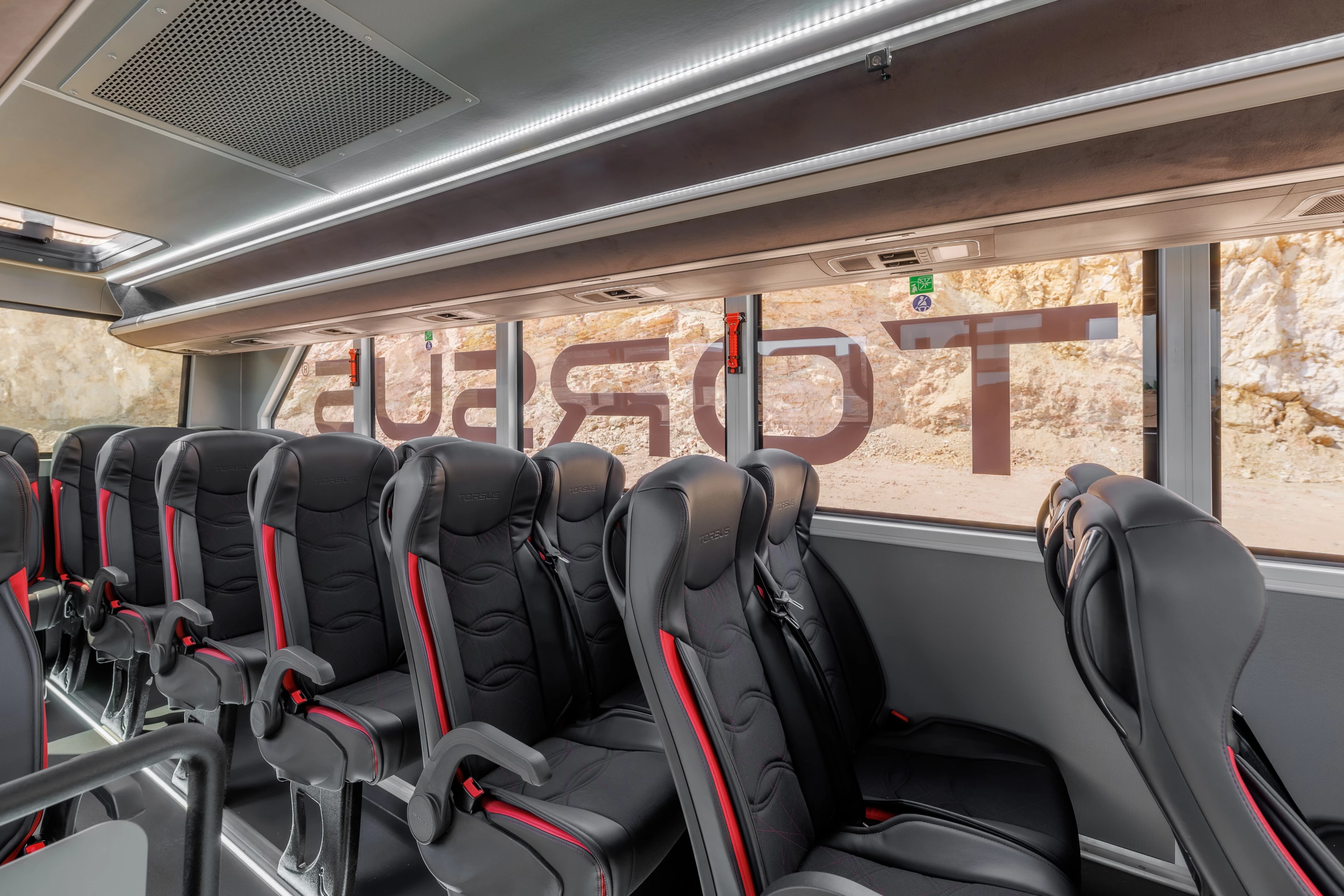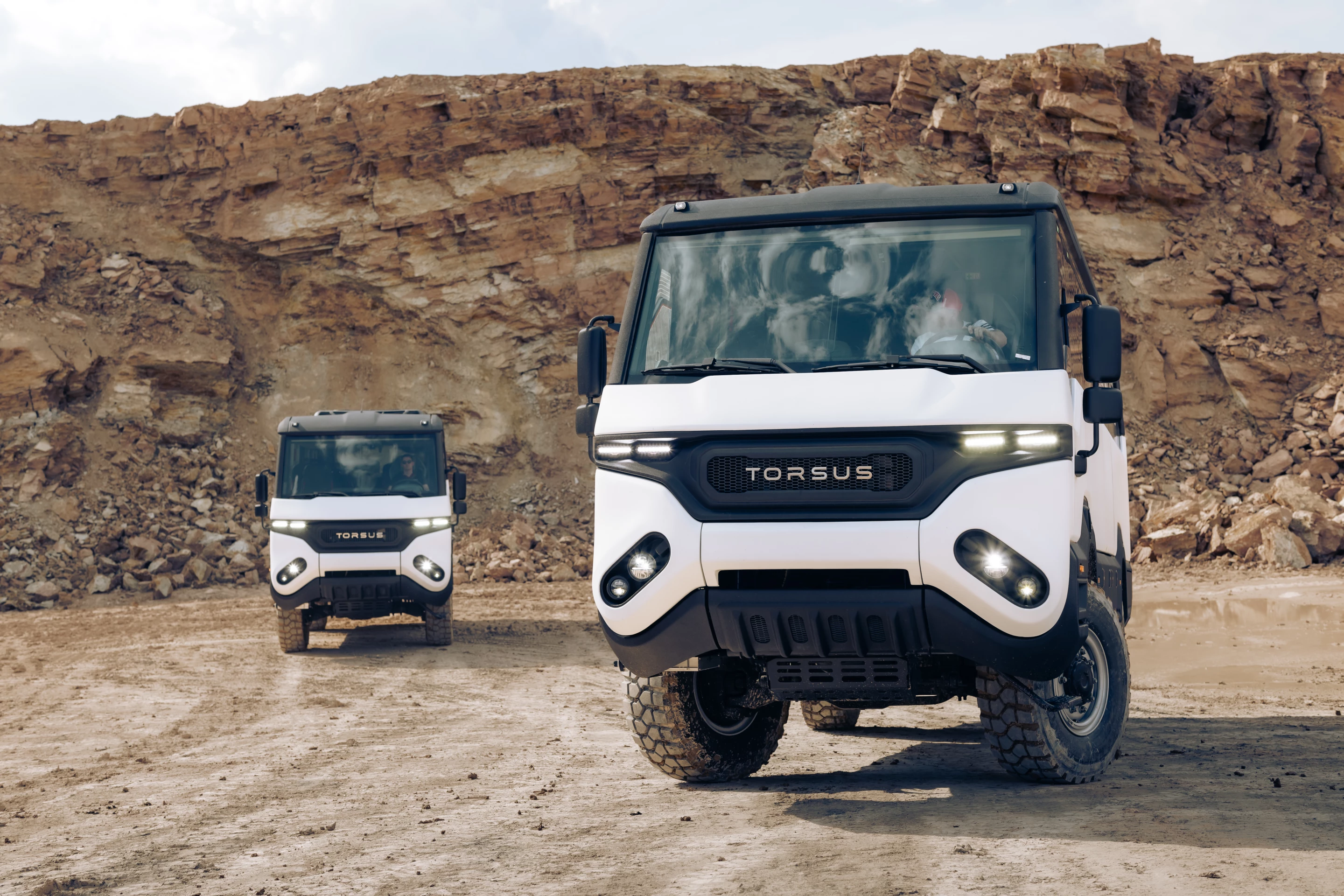Built to explore near-impenetrable earthly spaces and complete otherwise-impossible missions, the trail-breaking Praetorian from Czech builder Torsus is one of the world's most capable large off-roaders. A search-and-rescue homing machine, a personnel transporter for beyond-backcountry job sites, the world's most extreme school bus, and an epic overland motorhome, the Praetorian has served as a loyal, ultra-flexible MPV since its introduction in 2018. Now it's entering a third generation and getting even more capable. The Praetorian TG3 welcomes a new air suspension, improved chassis-to-body connection, and more creature comforts for its adaptable 34+1 cabin.
The Praetorian is fairly internet-famous among vehicle enthusiasts, but if you're not out working remote mines in the Arctic, you probably haven't spotted one in the real world. To sum things up, Torsus takes the giant hunk of heavy-duty truck chassis known as the MAN TGM, already the foundation of some of the world's most extreme off-road explorers, and skins it out into a fairly sleek, agile 35-man 4x4 bus with composite body, upgraded suspension system, and extensive features and options packages.

Torsus last updated the 28.5-foot-long (8.7-m) Praetorian in 2021, when it tacked on upgrades like LED lighting and an integrated fire-suppression system. The company must consider that update Generation 2 because it's calling today's news Generation 3, or the Praetorian TG3.
“At Torsus, we know if we want to create the toughest off-road bus in the world, we’ve got to be tough on ourselves as a company and tough on ourselves as designers and engineers," said Torsus founder and CEO Vakhtang Dzhukashvili. "To continue to lead the market, we know we can’t just sit on our laurels – we’ve got to push hard and innovate, and we’ve got to do it all the time. We have a saying in Ukraine, ‘A hungry dog is stronger than a satisfied wolf,’ and at Torsus, we are always very hungry for progress."

Beyond a mere hungry dog, we'd equate Torsus to an entire pack of starving wolves in terms of chasing the most advanced, capable-but-comfortable off-road bus design out there, and it brings more than 50 technical upgrades and options to the TG3 update. It all starts with a new-and-improved air suspension system at the front and rear, providing improved passenger comfort, better on-/off-road composure and even more capability in rough, variable terrain.
To further interior comfort gains, Torsus adds in new chassis-to-superstructure mounting hardware that improves articulation and absorbs road/trail vibrations, helping to tame the raw, harsh terrain below. A set of 19.5-in front and rear disc brakes delivers surer stopping power, and modern driver-assistance features like lane detection and a light and rain sensor package enhance ride safety.

Inside, Torsus overhauls the HVAC system for efficiency and performance, wiring the heating circuit into the engine cooling system to direct excess engine heat into the onboard heating system. In hot weather, new air vents improve airflow and distribution for more uniform cooling.
Other TG3 additions and improvements include a redesigned driver's cockpit, a higher-lifting front hood for better maintenance and repair access, a 12-tonne 30-m front winch, new windows and mirrors for better visibility, and an electric driver access step.
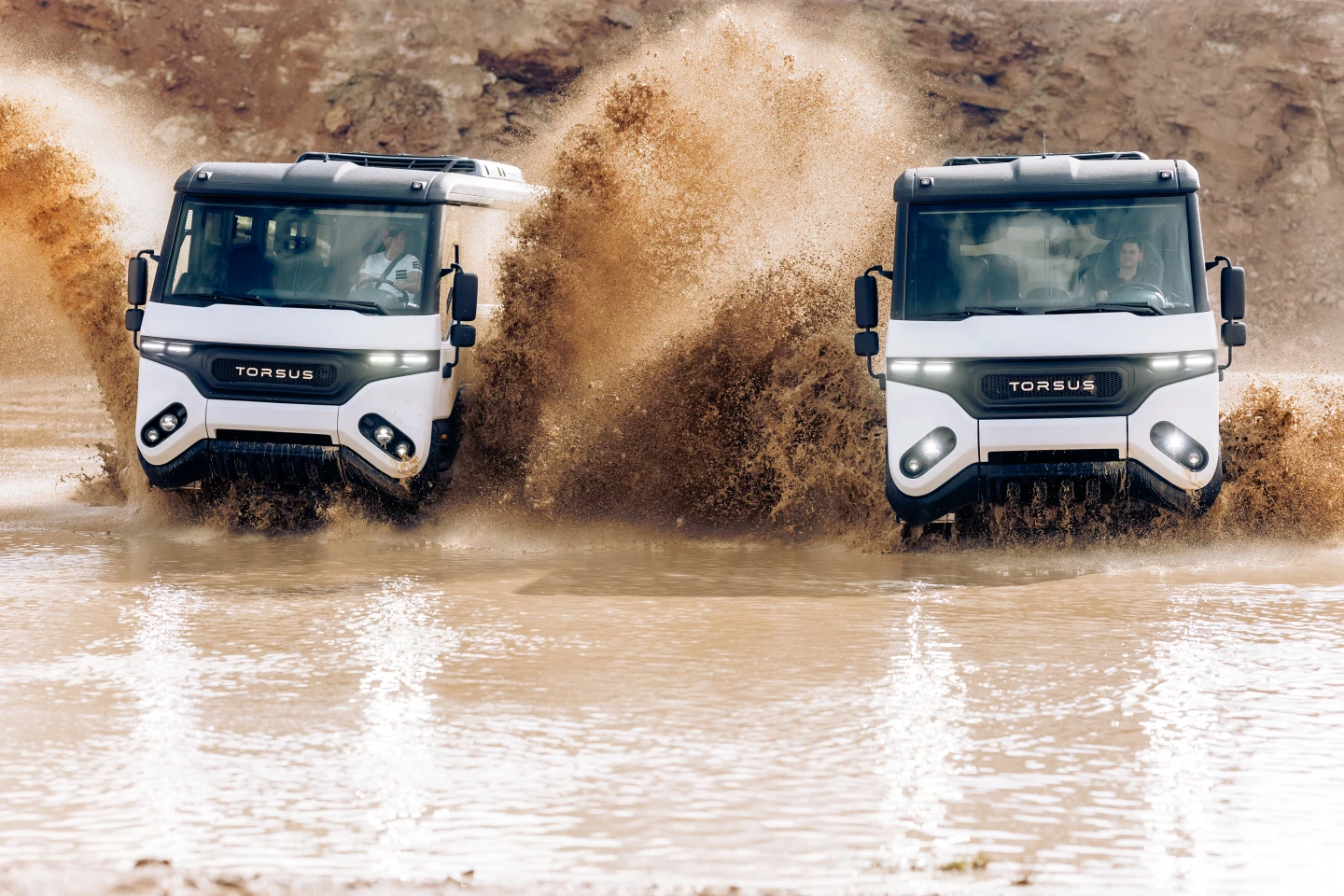
What hasn't changed is the Praetorian's ultra-capable beating heart: MAN's 6.9-liter six-cylinder diesel engine with 848 lb-ft (1,150 lb-ft) of torque distributed out via a 12-speed Tipmatic ZF AStronic transmission and heavy-duty 4x4 system with front, rear and inter-axle differential locks. Drive modes such as "Efficiency," "Emergency," "Off Road" and "Low-Range" help the Praetorian power through the unique and limitless challenges presented by its demanding use cases.
Torsus has already begun production on the Praetorian TG3 and launched it in initial markets like Germany, Spain and Ukraine. Prices start at €225,831 (approx. US$243,000), and the bus comes in Shell, Transporter and Minesite variants, offering a total of 14 different seating configurations.
Source: Torsus
